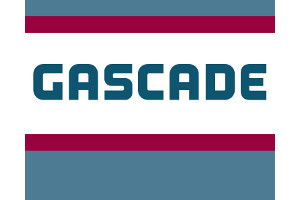- Our DNA
- Innovation Lab
- Publications
- Energy Transparency
- Press Corner
- Events
- Contact
- Subscribe
- Membernet
- My account
- Search
- Follow us at LinkedIn
- Follow us on Twitter
- Follow us on Instagram
By GASCADE & Fluxys
AquaDuctus will be a GW-scale offshore hydrogen pipeline – the first of its kind in European waters. The project is thus pursuing the goal of connecting large amounts of renewable hydrogen obtained offshore with the mainland and injecting into the emerging onshore infrastructure. In this way, demand centres, e.g. industrial chemical sites, hydrogen storage facilities etc. in Germany and other European member states can be reached.In a first phase, AquaDuctus connects a 15 MW hydrogen production plant (AquaPrimus II) off the coast of Helgoland with the consumers on the island. These projects were selected by the German Federal Ministry of Economics for funding as part of the hydrogen IPCEI process.
The next step is to connect the SEN-1 wind farm site, located 150 km north-west of Helgoland with a generation capacity of up to 1 GW for the production of green hydrogen, to the German mainland and the further onshore hydrogen infrastructure. Furthermore, it is planned to design the pipeline in such a way that a connection can be established to more distant future hydrogen wind farm sites in the exclusive economic zone of the North Sea in order to transport up to 10 GW of hydrogen production capacity to the German mainland (German Offshore H2 Backbone).
In addition, the pipeline also enables connections to other offshore hydrogen infrastructures of bordering European North Sea countries (European Offshore H2 Backbone). The pipeline, when fully utilized, will replace five high-voltage direct current (HVDC) cables that would otherwise need to be built and is therefore by far the most cost- and time-effective option for transporting large amounts of energy over long distances and has the lowest environmental impact.
 Oliver Reimuth
Oliver Reimuth
Hydrogen & Systainability
Tel.: +49 561 934-1385
E-Mail: oliver.reimuth@gascade.de
GASCADE Gastransport GmbH / Kölnische Straße 108-112 / 34119 Kassel, Germany





































































